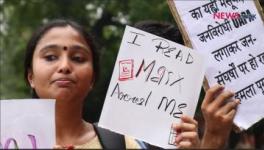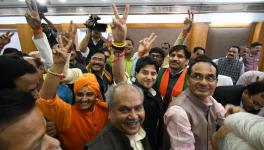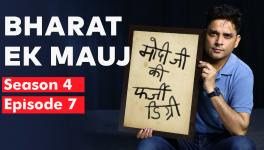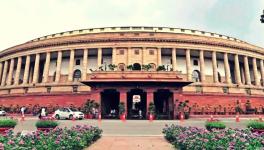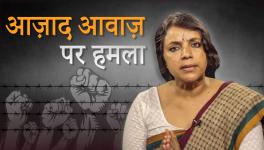From Anti-National to Urban Naxal: The Trajectory of Dissent in India
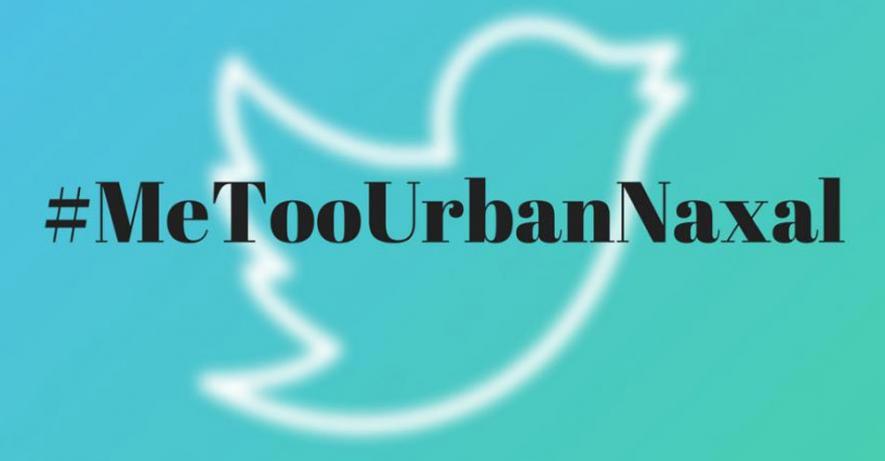
There has been a significant shift in the narrative of branding dissent in India in the last two years. After the February 9 incident in Jawaharlal Nehru University, the term ‘Anti-National’ gained prominence and captured tremendous attention. Then, with the recent arrest of six human rights’ activists and lawyers by the Pune Police in a pan-India raid, following the earlier arresting of five activists in June this year – which marked India’s McCarthian moment- we witnessed the shift in branding of dissent from ‘Anti-National’ to ‘Urban Naxal’. Though both the terms ‘Anti-National’ and ‘Urban Naxal’ are used to vilify and delegitimise dissent, and overlap to a great extent, there are some significant differences between the two. While the term ‘anti-national’ has been an important part of the BJP-RSS lexicon to brand opposition since a long time, the term ‘urban naxal’ is of recent origin.
The term urban naxal was popularised by the filmmaker Vivek Agnihotri through his movie ‘Buddda in a Traffic Jam’ and later in his book titled ‘Urban Naxals’, which was released in the last week of May this year. In fact, what can be described as nothing but sheer ‘coincidence’, the arrest of five activists in relation to the Bhima Koregaon violence was followed by Agnihotri’s book launch, and the arrest of the six activists last week followed two mega events on ‘Urban Naxalism’ in Delhi. Two programs were organised back to back in Delhi, first in JNU and then in Hansraj College, Delhi University.
What does the label ‘urban naxal’ denote? The term urban naxal in contrast to the term ‘anti national’ is much broader and subsumes the latter within it. According to Agnihotri, urban naxals are anti-Hindu, anti-India, and anti-humanity, who work with NGOs, feminist groups, atheist groups, trade unions, journalists, anti-superstition movements, students, farmers, laborers, slum groups and even competitive exam centers. The term ‘urban naxal’ is a far more ideologically loaded term as compared to the term ‘anti-national’. While the latter is generally used in the context of Pakistan or China or Kashmir, the former also includes the critique of the caste system, of superstition, of atheism, of patriarchy as well as a critique of the current capitalist development model which insists on privatisation of every resource and service (In the recently held seminar in Hansraj College, feminism and feminists were branded as urban naxals and a case was made for ‘Indian Familyism’!). Anti-National is generally used to denote an individual, organisation or activities, while ‘urban naxal’ generally refers to a movement as it includes activists, writers, artists and poets along with organisations and individuals.
With the term ‘anti-national’ losing its potency in its opinion building in favor of the BJP-led NDA government in the context of price rise of essential commodities including Diesel and Petrol, mounting NPAs (non-performing assets), rising unemployment, dwindling economy and overuse; the term ‘urban naxal’ has come to the rescue of this government. Now every critique who questions the government on employment, health, NPAs, Scams, letting off loan defaulters, rising prices etc. can be branded as an ‘urban naxal’, motivated by an ideology which is connected with the Maoists – who are criminals in popular imagination- and are working to destabilise India.
Another major difference between both the terms is the association of urban naxal with Dalit assertion. The Pune police arrested all eleven activists in connection to the Bhima Koregaon violence, which had erupted after a section of the Maratha community led by Milind Ekobote and Sambhaji Bhide (both associated with the Sangh Parivar) attacked the 2nd biennial celebration of the famous Battle of Koregaon in 1818 where a small Mahar regiment had defeated the much bigger Peshwa army, which then became a symbol of Dalit assertion and pride.
After the anti-Dalit violence in Saharanpur, the Bhim Army and its members who resisted the upper caste violence were labelled as ‘Maoists’. In fact, the labelling of any form of dissent or protest against the Indian state and its policies as ‘naxalism’ has been an old strategy of the Indian State, irrespective of which party occupies the center. Former PM Manmohan Singh had called Maoists as ‘India’s biggest internal security threats’. This label has been extended to the proponents of human rights and critics of violation of civil rights by the government.
The term ‘urban naxal’ is far more potent than the term ‘anti-national’ in branding dissent, as it is related with a spatially close, in-house phenomenon represented by the Maoist movement in India which keeps attacking Indian security forces at regular intervals, which then dominates the Indian prime time and newspaper headlines for several days giving it a sense of ‘clear and present danger’. Contrary to this the term ‘anti-national’ is generally associated with Muslims and Pakistani or Kashmiri militants and seems as a distant phenomenon- though with the JNU February 9 incident this term has now acquired a more closer dimension.
Another significant dimension of the term ‘urban naxal’ is its association with the term ‘Vikash virodhi’ i.e. anti-development. The Maoist movement in India is dominant in regions which are populated by tribal communities and are also resource-rich, which has been on the radar of successive Indian governments, who have signed various MoU’s with several corporate houses for exploitation of resources from those areas. With strong resistance to government backed corporate projects in those areas by tribal communities, it becomes imperative for the government to build a wider consensus among Indian masses to take severe repressive measures against people’s resistance in those areas against forceful land acquisition.
Louis Althusser, the French Marxist theoretician in his most celebrated work ‘Ideology and Ideological state apparatus’, differentiates between the Repressive State Apparatus (RSA) and the Ideological State Apparatus (ISA), with the former consisting of the Police, Armed forces and Court, while the later consists of Media, Schools, Church and a wider array of social and civil institutions forming part of the broader civil society. While the former heavily depends on coercive actions, the latter focuses on the dissemination of the ideology of the ruling classes and works passively. The objective of both is to implement the policies of the ruling class and to build a broader consensus for legitimisation of the ruling government.
The recent arrests of activists and their coverage by a larger section of media is nothing short of both RSA and ISA working in perfect harmony to create the bogey of ‘urban naxal’ and its continued perpetuation. The term ‘urban naxal’ is nothing but an amplification of that threat, of Maoists capturing the Indian state, which is being perpetuated by both the ISA and RSA in the Indian context.
The term urban naxal helps the BJP government to shoot at two targets with one arrow. It helps to create a sense of fear among the masses about the spread of ‘naxalism’, which is seen as a threat to Indian nation, thereby creating this artificial demand of a ‘strong state’ expressed by draconian laws and brutal police action. The aim of all this is to create a legitimate space for the specific brand of politics represented by the BJP and the Sangh Parivar. The second aim which gets realised through the term ‘urban naxal’ is legitimating the appropriation of land and natural resources by the Indian government for corporate houses, which is being resisted by common people in different parts of this country.
The current regime is a deadly mix of aggressive Hindutva and neo-liberal economic policies, and it will not be surprising to see more such branding and vicious campaigns being run against those activists and lawyers who resist these neo-liberal economic policies which lead to the disenfranchisement of the most marginalised communities of India, who are prey to the Brahmanical system.
The author is a Research Scholar in Jawaharlal Nehru University.
Get the latest reports & analysis with people's perspective on Protests, movements & deep analytical videos, discussions of the current affairs in your Telegram app. Subscribe to NewsClick's Telegram channel & get Real-Time updates on stories, as they get published on our website.









